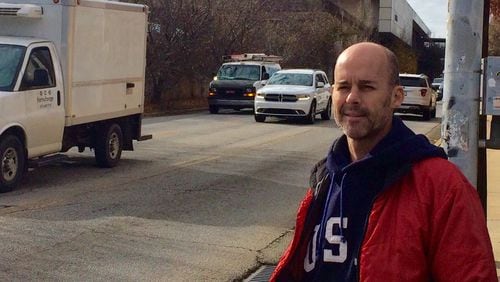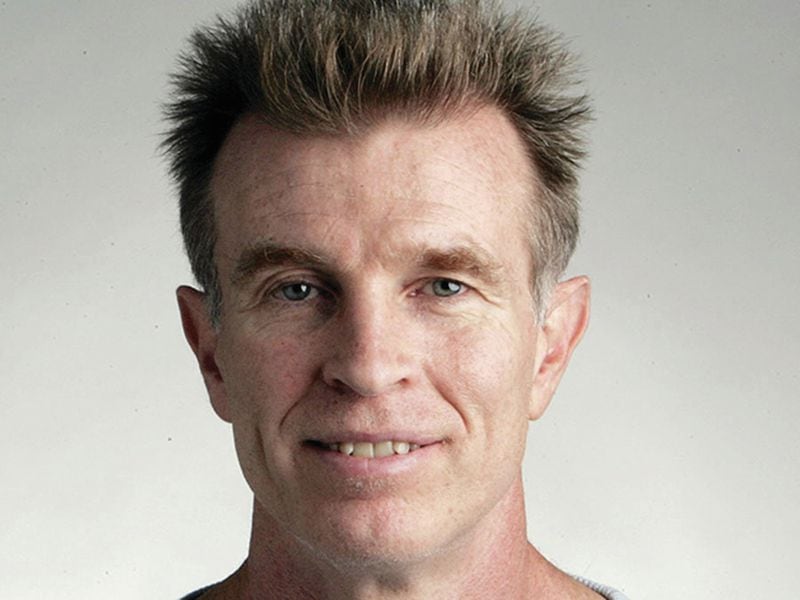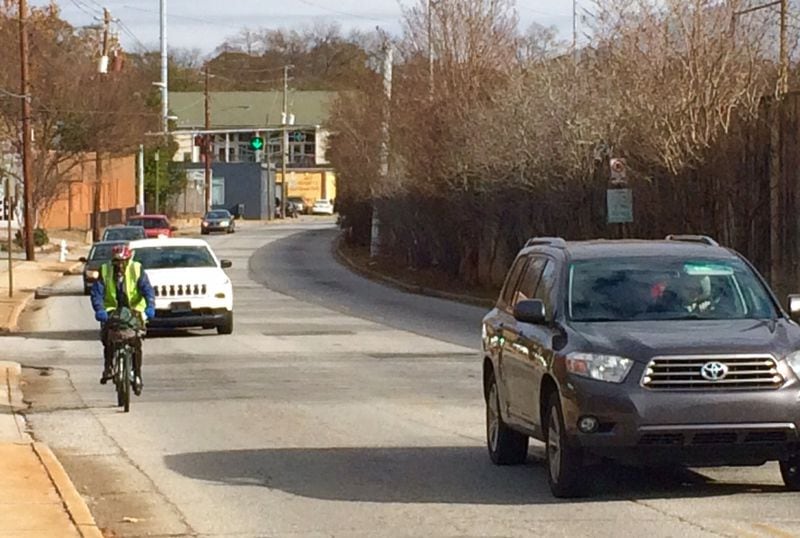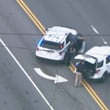As motorists, we all create internal maps of street routes that can get us to where we need to go in the most efficient manner.
That map is an ever-changing maze, shifting as development takes over parts of the city or as others discover our traveling secrets.
For decades, DeKalb Avenue, an ugly duckling of a route running along the railroad from Atlanta to Decatur, has been such an efficient mover, one of the rare east-west thoroughfares in the city that actually works.
Until maybe now.
Look out drivers. Atlanta is getting ready to expand its "complete streets" program, a term that is a euphemism for completely screwing over cars.
A proposal for DeKalb Avenue includes the possibility of eliminating the reversible third lane and striping in bike lanes on the reallocated asphalt.
Now, before I go further, let me extend this qualifier: Bicyclists are often lovely, well-meaning people who simply want to get from one place to another without getting squished. I mean them no harm, although the emails that are sure to roll in after this story's publication will conclude otherwise.
That out of the way, let me say that putting bike lanes on DeKalb Avenue is an absolutely crazy idea. It would greatly reduce traffic capacity for the sake of making a socio-political statement for the benefit of the few.
The impetus for these coming “improvements” is a $250 million bond program overwhelmingly passed last year by Atlanta voters to fund a wide-ranging civic infrastructural wish list.
Now, $250 million sounds like a lot of money. But Atlanta already has $900 million in infrastructure needs, according to the mayor’s office, so that pie gets sliced up quickly: $71 million for roadways, $40 million to synchronize traffic lights (I’ll believe that when I make two green lights in a row) and $31 million for “complete streets.” Add in parks, disabled access, public safety buildings, etc., and those pie slices are merely slivers.
The complete streets program includes such popular routes as Howell Mill Road, Piedmont Avenue, Monroe Drive, MLK Drive, Abernathy Drive and even a chunk of Peachtree Street.
In recent months, city officials have held info sessions on these programs, as each will have different constituencies and configurations. Last month was DeKalb Avenue’s turn.
The meeting took place in a church sanctuary and some 300 people attended. A board was put up for attendees to stick blue dots on quadrants indicating their favorite "modalities" (bikes, cars, walking, public transit). As you might imagine, the bicyclists were over-represented and filled their space.
This should be no surprise. In recent years in Atlanta, bicyclists have been flexing their muscular and shapely legs to get the attention of intown politicians. Once again, nothing wrong with this because until a few years ago, they were seen as the bothersome folks in Spandex getting shouted at as they held up the global warmers.
The ‘suicide lane’
But let’s get back to DeKalb Avenue. The problem is it’s one of the few efficient east-west corridors, one that is equipped with a middle reversible lane popularly known as the “suicide lane,” meant to increase capacity each way during respective rush hours.
Now, there are challenges with such a configuration. Drivers are often impatient and distracted, many of whom can’t wait until the next traffic light to respond to a semi-important text. And so, you have 200 crashes and 55 injuries a year, according to the city’s count.
Doing away with the suicide lane and replacing it with a middle turn lane might make sense. In fact, left-turners often bring traffic to a standstill during the one-lane configuration.
Jim Kissel, a Candler Park resident who was walking along DeKalb Avenue on Friday, said it was once put to him this way: “People who turn left on two-lane roads are evil.”
And there lies the problem. You can’t convert the third lane into a left-turn lane AND stripe in bike lanes. There just isn’t enough width along the street in many places.
‘Visionary thoughts’
Here are the options:
» 1) Keep largely as is, with new sidewalks and better synched traffic lights, as well as better suicide lane indicators, and let traffic flow.
» 2) Convert the reversible lane to a left-turn lane, which would keep traffic moving.
» 3) Put in bike lanes but forget having a third lane along much of the four-plus miles and leave drivers stewing behind the evil left-hand turn folks.
I talked with Faye DiMassimo, Renew Atlanta czar, and Genetha Rice-Singleton, the DeKalb Avenue project manager. Both said that there is no preconceived notion.
DiMassimo said no plans are complete or even drawn up. “We took a different approach,” she said. “We asked if you could re-imagine this corridor, what would it be?
“That’s exactly what people did,” she added, “including some bold, visionary thoughts.”
She said putting together a plan is based on data, public opinion and political considerations. "It's an art and a science," she said.
But what you see as a bold, visionary thought might be my vision of stewing in traffic. The idea of many in Atlanta is to squeeze the roads so that drivers are so flustered that they get MARTA cards or buy bicycle pants with padded bottoms.
I spoke with about a dozen people along DeKalb on Friday. Only one person, a disabled vet named Eddie Jenkins, was solidly behind putting in bike lanes. Incidentally, he was on a bike. (One of the two I saw in 90 minutes Friday.)
More were like Tim Hovey, who owns a gym on DeKalb Avenue and is also a regular bicyclist.
“That doesn’t make sense; it’s crazy,” he said. “Does it need bike lanes? Definitely. Is there room? No.”
He suggested putting bike lanes on parallel routes.
Ian Marceca said the road “moves (traffic) uniquely fast. The suicide lane seems to keep it moving. If it’s not broken don’t fix it.”
But there is $4.5 million allocated for this project that’s burning a hole in the city’s pocket. Let’s see if traffic flow is sacrificed on the altar of New Urbanism.
About the Author









